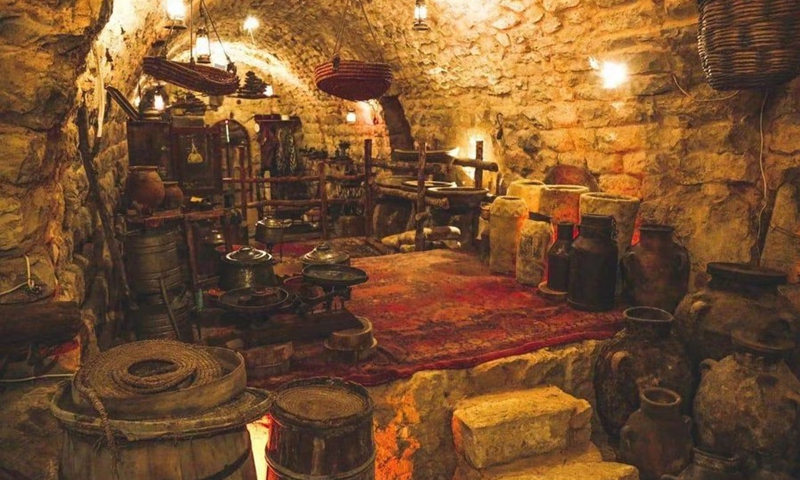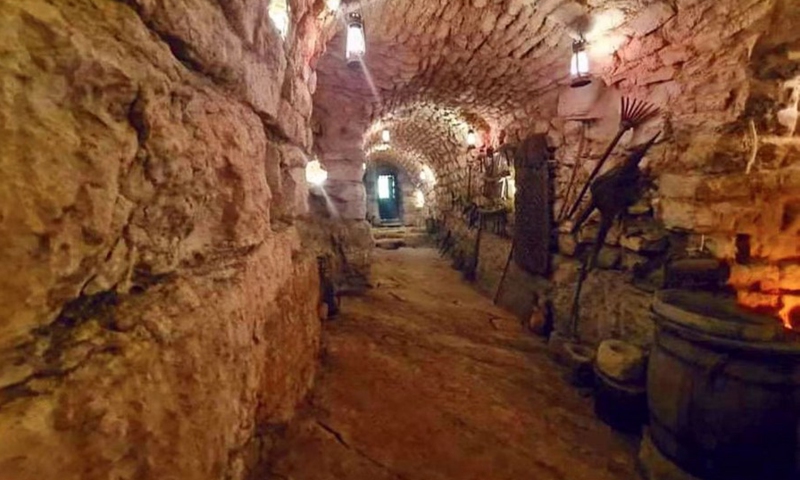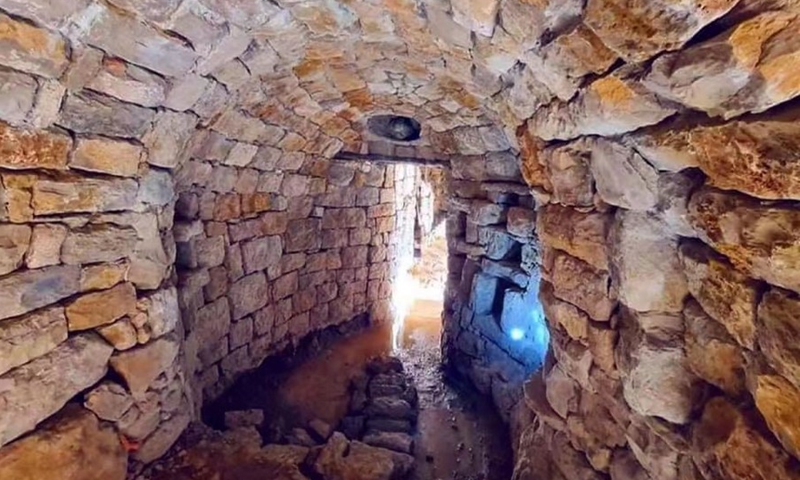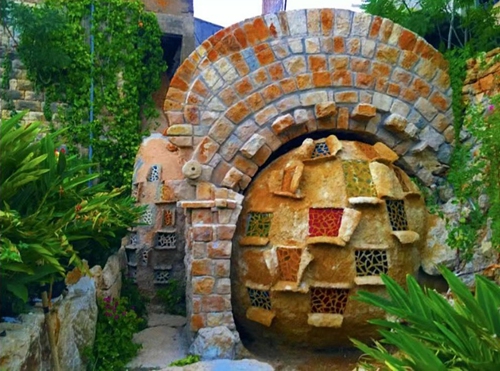
Photo provided by Ghandi Abu Diab on Sept. 3, 2022 shows a meeting room of a museum converted from ancient rock vaults in the village of al-Jahliyeh in Mount Lebanon, Lebanon.(Photo: Xinhua)

Photo provided by Ghandi Abu Diab on Sept. 3, 2022 shows a rock tunnel connecting the vaults in his museum in the village of al-Jahliyeh in Mount Lebanon, Lebanon.(Photo: Xinhua)

Photo provided by Ghandi Abu Diab on Sept. 3, 2022 shows a rock tunnel connecting the vaults in his museum in the village of al-Jahliyeh in Mount Lebanon, Lebanon.(Photo: Xinhua)

Photo provided by Ghandi Abu Diab on Sept. 3, 2022 shows the rock exterior in his museum in the village of al-Jahliyeh in Mount Lebanon, Lebanon.(Photo: Xinhua)
Ghandi Abu Diab, a Lebanese in his fifties, has spent three decades exerting strenuous efforts to transform the ruins of Ottoman-era rock vaults into a heritage museum in al-Jahliyeh, a village in the Chouf District of Mount Lebanon.
Archaeologists and geologists who examined the vaults said these ruins could be traced back to over 400 years ago under the rule of the Ottoman Empire, according to Abu Diab.
"During the Mutasarrifate era, local officials and notables from al-Jahliyeh and surrounding villages used these vaults as a secret meeting place," Abu Diab told Xinhua as he worked in the museum, referring to an administrative district under the Ottoman rules.
Abu Diab said he was inspired to start the restoration work when he first found the entire structure of multiple vaults interconnected through tunnels, and an inner chamber, though left unattended for years, had been unexpectedly sturdy and full of delicate engravings.
He then embarked on two-stage restoration work, throughout which he was particularly careful not to alter the potholes and pavement rocks that naturally came loose over time, Abdu Diab said.
The first stage was to clean up debris in the vaults and install steel mesh reinforcement for the brick facades. The second consisted of carving and engraving based on paintings that depict the village life of al-Jahliyeh, its customs, and its characteristics.
Abu Diab said most of the work was done by himself in an intermittent way due to the current economic crisis.
Once finished, the whole underground system sprawled across 1,500 square meters. Meanwhile, wood or bronze reliefs, oil paintings, and other art installations of natural materials were brought in to transform the vaults into an art venue.
"The revival of heritage architecture through the construction of rock tunnels, stone corridors, columns, and fishponds, adds to the charm of this tourist attraction," he said, adding sitting in a forest full of greeny foliage gives the museum an extra touch of natural appeal.
One of the stone chambers was converted into a library full of books and encyclopedias. Next to it is a meeting area devoted to art, cultural, and music events, and recreational activities.
"A stone cellar that I finished looks like a coal mine rail locomotive. A part of the roof is chimney-shaped, inlaid with stained-glass to reflect the movement of the sun and colorful lighting," he said.
According to the Lebanese Tourism Ministry, Lebanon hosts 700 documented caves constituting natural tourist attractions for discovery and exploration lovers.
The ministry notes that caves attract about one million tourists annually, including geologists, scholars, nature lovers, and eco-tourists.
